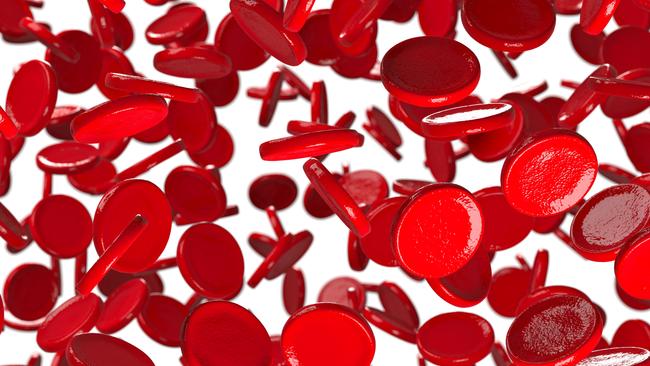Australian National University researchers have developed a microscope attachment capable of detecting blood clots before they form
RESEARCHERS have developed a microscope attachment capable of detecting blood clots before they form, in what could be a ‘gamechanger’ to help prevent strokes and heart attacks.
News
Don't miss out on the headlines from News . Followed categories will be added to My News.
A MICROSCOPE attachment capable of detecting blood clots before they form has been developed as an early warning system against stroke and heart attacks.
The Australian researchers responsible now hope to shrink their discovery, allowing doctors to gain a practical warning of when to administer blood-thinning drugs before it is too late.
From a simple blood sample the researchers from the Australian National University can detect the build-up of tiny platelets to construct a 3D hologram of clot formation, which Assoc Prof Elizabeth Gardiner said was a potential “gamechanger”.
DRUG USED TO TREAT HEART ATTACK MORE EFFECTIVE THAN CURRENT STROKE TREATMENTS
STROKE SURVIVORS STRUGGLE TO RETURN TO WORK
NEW STRATEGY FOR VICTORIA’S STROKE PATIENTS
“We will take a little blood sample as though your were having a blood sample,” she said.
“Together with the other blood tests that a doctor would normally take it moves the goalposts forward a significant distance.
“Right now all they do is count the number of platelets, they don't measure platelet function and what is actually happening to them.”
Doctors can currently use test blood samples to determine if a patient has elevated levels of platelets — which are a tenth of the size of a regular cell and quickly clump together to begin the formation of a clot.

However, elevated platelet levels do not always indicate a clot will form.
With their new “bio-optics diagnostic device”, the ANU team can measuring the delay time for light to travel through the clot, indicating not only the number of platelets, but also how active they are.
While the device can be fitted onto a regular microscope the current design takes up too much space to be used outside a laboratory, so the ANU team hope to shrink it to the size of a shoebox for use in a clinical setting.


